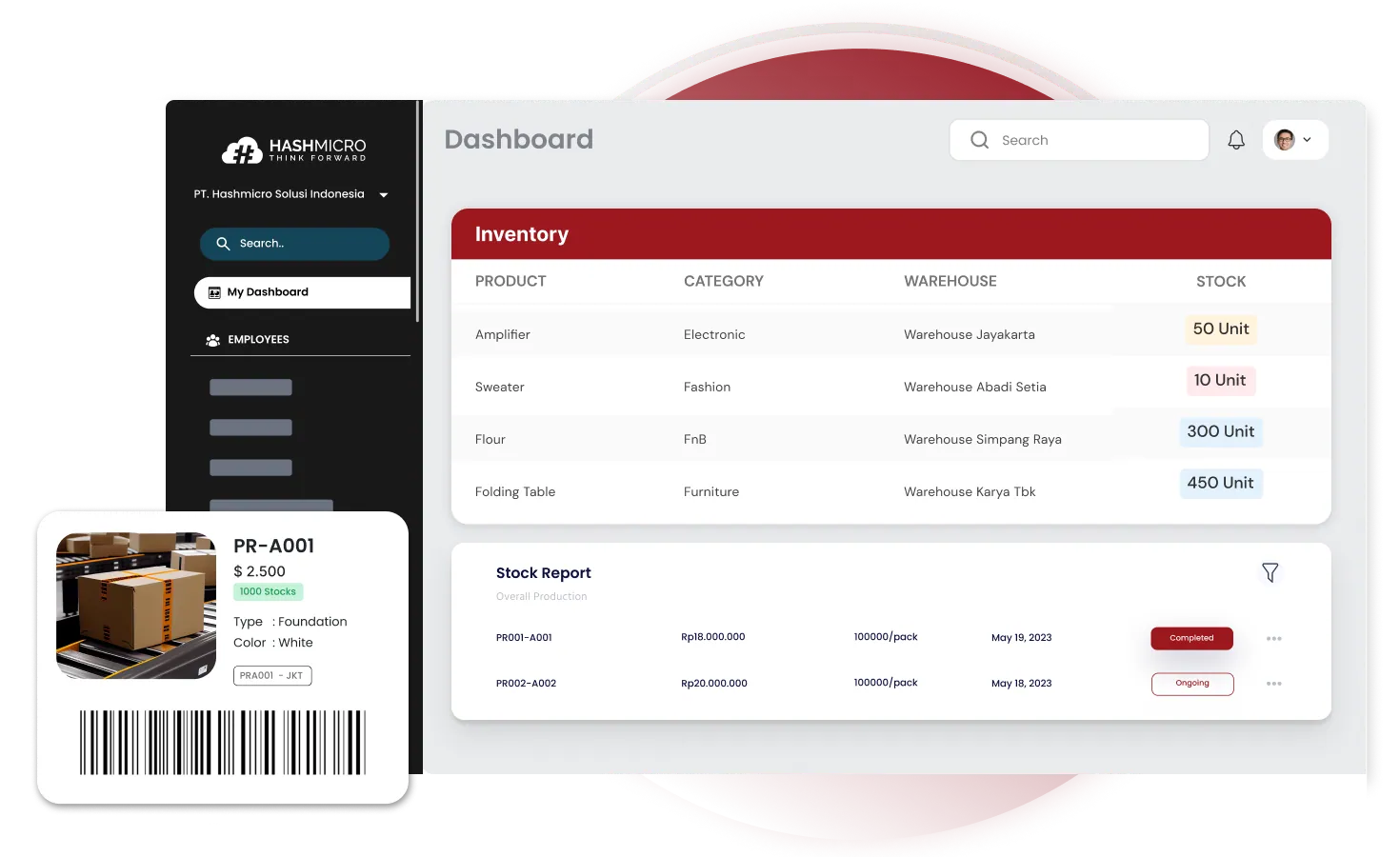Do you know that businesses managing inventory manually often face expensive mistakes each year? Many of these errors can be avoided by using effective methods like the First-In, First-Out (FIFO) method. The FIFO method helps businesses manage inventory better by ensuring that the oldest items are used or sold first, which reduces waste and improves profits.
For Filipino businesses, understanding and using FIFO is especially important. Whether you run a small shop in Manila or manage a large distribution center in Cebu, applying FIFO principles can make a big difference.
Using inventory management software that supports FIFO can further enhance this process. These tools automate inventory management, ensuring FIFO is applied consistently. This improves accuracy, reduces waste, and boosts efficiency, ultimately impacting your bottom line and helping you stay competitive.
To learn more about how FIFO works and how you can apply it effectively in your business, read our next section on “What is the FIFO Method.”
Table of Contents

Key Takeaways
|
What is the FIFO Method?
The FIFO (First-In, First-Out) method actively manages inventory control by selling or using the first items added to inventory first. This technique ensures that goods purchased or produced earlier are utilized or sold before newer inventory.
FIFO effectively aligns inventory costs with current sales prices, giving companies a more accurate assessment of their inventory value. By selling older items first, businesses base their cost of goods sold (COGS) on the cost of earlier purchases, often reflecting lower prices.
This method also prevents discrepancies between current market prices and the inventory recorded in financial statements, providing businesses with a clear and consistent view of profitability.
How FIFO is Applied in Inventory Management
In inventory management, the FIFO method is crucial for industries where product freshness, relevance, or expiration is a concern. For example, in the food and beverage sector, FIFO ensures that older stock is sold before newer inventory, minimizing waste and avoiding inventory aging.
This method also benefits industries like fashion, electronics, and pharmaceuticals, where products can become obsolete or less valuable over time.
By implementing FIFO, companies can maintain the quality and relevance of their inventory, ensuring that customers receive fresh and up-to-date products.
Additionally, FIFO can simplify inventory tracking and reporting, as it aligns closely with the physical flow of goods in most businesses, making it easier to manage and audit inventory.
How the FIFO Method Works
FIFO Inventory Valuation Explained
FIFO inventory valuation is straightforward: the cost of goods sold (COGS) is based on the cost of the earliest inventory purchases. This means that during periods of inflation, where prices rise over time, the COGS will reflect the older, lower costs.
As a result, the ending inventory is valued at the most recent, higher costs, providing a more accurate representation of the current market value.
The FIFO Calculation Process
Calculating FIFO is a simple process that involves matching the oldest inventory costs with the latest sales. For each sale, the cost is assigned based on the order of purchase, starting with the earliest inventory.
This process continues until all inventory from that period is depleted, then the next oldest inventory is used, and so on.
FIFO Formula & Calculation Example
FIFO Formula Breakdown
The FIFO formula involves subtracting the cost of the oldest inventory from the revenue generated by sales. It is expressed as:
FIFO Inventory Cost= Cost of First Batch Sold + Cost of Second Batch Sold + …This formula helps businesses calculate the cost of goods sold accurately, ensuring that the oldest inventory costs are accounted for first.
Step-by-Step Calculation
- Identify the cost of the oldest inventory.
- Multiply the cost by the number of units sold.
- Continue the process with the next oldest inventory until all units sold are accounted for.
Real-Life Example and Walkthrough
Let’s say an electronics store purchased 100 units of a smartphone model at ₱10,000 each and later bought another 50 units at ₱12,000 each.
If the store sold 120 units, the FIFO method would allocate the cost of the first 100 units at ₱10,000 and the remaining 20 units at ₱12,000. This process ensures that the store’s COGS is calculated based on the earliest inventory, reflecting an accurate cost.
Pros and Cons of the FIFO Method
Advantages
- Higher Valuation for Ending Inventory: FIFO results in a higher valuation for ending inventory, as it accounts for the most recent costs.
- Increased Net Income: By using older, lower-cost inventory first, businesses can show higher profits during inflationary periods.
- Reflects Actual Inventory Movement: FIFO accurately represents the physical flow of inventory, especially for perishable goods.
Disadvantages
- Potential Discrepancies with Spikes in COGS: During periods of rapid price increases, FIFO may lead to discrepancies in COGS, affecting profit margins.
- Higher Taxes Due to Increased Income: Higher reported income can lead to higher tax liabilities, a significant consideration for businesses.
FIFO vs. Other Inventory Methods
FIFO vs. LIFO
While FIFO focuses on selling the oldest inventory first, the Last-In, First-Out (LIFO) method does the opposite, selling the most recently acquired inventory first. LIFO can result in lower taxes during inflation but might not reflect the actual inventory flow, making FIFO a more realistic approach.
FIFO vs. Average Cost Method
The Average Cost Method averages the cost of all inventory items and applies this average to each sale. While simpler, it may not provide as accurate a reflection of inventory value as FIFO does, especially in industries with fluctuating costs.
FIFO vs. Specific Identification Method
The Specific Identification Method tracks each inventory item individually, assigning the exact cost to each sale. While precise, it is more complex and less practical for businesses with large volumes of inventory, making FIFO a more efficient choice.
Choosing the Right Inventory Method for Your Business
Factors to Consider
When selecting an inventory method, consider factors like the nature of your products, market conditions, and tax implications.
For Filipino businesses, where market dynamics can change rapidly, choosing the right method is crucial to maintaining profitability and compliance.
How to Decide Between FIFO and Other Methods
To decide between FIFO and other methods, assess your business’s specific needs. FIFO is ideal for businesses dealing with perishable goods or where inventory valuation accuracy is paramount. However, consult with a financial expert to ensure the chosen method aligns with your long-term business goals.
Why FIFO is a Popular Choice
Benefits for Different Types of Businesses
FIFO is a popular choice because it offers versatility across various industries. Whether you’re in retail, manufacturing, or food service, FIFO ensures your inventory is managed efficiently, increasing turnover, reducing waste, and maximizing profits.
How FIFO Aligns with Filipino Business Practices
In the Philippines, where businesses often face challenges related to inventory spoilage and obsolescence, FIFO aligns perfectly with the need for efficiency and cost-effectiveness.
Your businesses can benefit from FIFO by ensuring that older stock is always sold first, reducing the risk of waste, and ensuring product freshness.
Leave Inventory Management to the Experts
Benefits of Professional Inventory Management Services
Managing inventory effectively can be complex, especially as your business grows. By outsourcing inventory management to experts, you can focus on core business activities while ensuring your inventory is handled professionally and efficiently.
Recommended Services for Filipino Businesses
For Filipino businesses looking to streamline their inventory management, HashMicro offers tailored solutions designed to meet the unique needs of the local market.
With features like real-time tracking and comprehensive reporting, HashMicro’s Inventory Management Software can help you stay on top of your inventory, reduce costs, and improve overall business performance.
Streamline Your FIFO Process with HashMicro’s Advanced Solutions
To implement the FIFO method effectively, you need the right tools. HashMicro’s Inventory Management Software helps Filipino businesses like yours leverage FIFO benefits, making inventory management more accurate, efficient, and stress-free. Here’s how HashMicro can be your solution:
- Real-Time Stock Monitoring: Receive instant updates on inventory levels, ensuring that your oldest stock sells first, minimizes waste, and prevents stockouts.
- Multi-Location Management: Manage inventory across various warehouses or outlets easily, applying FIFO consistently wherever your stock is stored.
- Automated FIFO Reordering: Set automated reorder points based on FIFO principles to maintain optimal stock levels without manual intervention.
- Customizable FIFO Reporting: Generate detailed FIFO-aligned reports for insights into stock movement, cost calculations, and inventory valuation to support better decision-making.
- Scalability for Growing Businesses: Whether you’re a small business or a large enterprise, HashMicro’s software scales with your needs, managing inventory efficiently as you grow.
Integrate HashMicro’s software into your operations to streamline your FIFO process and gain a competitive edge. Explore HashMicro’s solutions today and start with a free demo to see how our software can transform your business.
Conclusion
Wrapping up, it’s clear that the right inventory management approach can really impact your business’s success. The FIFO method, with its simple yet effective strategy, helps keep your inventory organized, reduce waste, and ensure you’re always selling the oldest stock first—something that’s especially important for businesses here in the Philippines.
But let’s be honest—keeping track of inventory can be challenging, no matter how great your method is. That’s where HashMicro’s Inventory Management Software comes in. It’s designed to make your life easier, giving you real-time insights and reports that help you stay on top of your stock without the stress.
Curious to see how it works? Try out a free demo and discover how HashMicro can help your business run smoother and more efficiently.

FAQ About FiFO Method
-
Why is the FIFO method important?
The FIFO method is crucial because it ensures that the oldest inventory is sold first, reducing waste, preventing obsolescence, and providing a more accurate reflection of inventory costs, especially in industries with perishable goods or fluctuating prices.
-
Why is it better to use FIFO?
FIFO is better because it reduces waste by selling older stock first, reflects actual inventory movement, and provides accurate financial reporting during inflation by aligning costs with the oldest inventory.
-
How to solve FIFO method?
To solve FIFO, track inventory costs from the oldest to the newest. Match the oldest costs to sales first, then continue with the next oldest until all units sold are accounted for.
{
“@context”: “https://schema.org”,
“@type”: “FAQPage”,
“mainEntity”: [{
“@type”: “Question”,
“name”: “Why is the FIFO method important?”,
“acceptedAnswer”: {
“@type”: “Answer”,
“text”: “The FIFO method is crucial because it ensures that the oldest inventory is sold first, reducing waste, preventing obsolescence, and providing a more accurate reflection of inventory costs, especially in industries with perishable goods or fluctuating prices.”
}
},{
“@type”: “Question”,
“name”: “Why is it better to use FIFO?”,
“acceptedAnswer”: {
“@type”: “Answer”,
“text”: “FIFO is better because it reduces waste by selling older stock first, reflects actual inventory movement, and provides accurate financial reporting during inflation by aligning costs with the oldest inventory.”
}
},{
“@type”: “Question”,
“name”: “How to solve FIFO method?”,
“acceptedAnswer”: {
“@type”: “Answer”,
“text”: “To solve FIFO, track inventory costs from the oldest to newest. Match the oldest costs to sales first, then continue with the next oldest until all units sold are accounted for.”
}
}]
}























